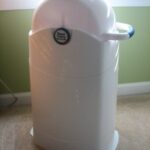Cradle cap is seborrheic dermatitis in infants. This is a relatively common inflammatory skin condition with young babies that is likely to clear up on its own within one year. Symptoms can persist beyond the first year however. It appears as thick, scaly skin on the top of the head. The scales may be yellowish and greasy. While generally the dermatitis remains on the scalp it can appear in other areas, such as on the face or in creases of the diaper area.
While not dangerous, this condition can be alarming to new parents. Cradle cap treatments can help to nourish and balance your baby’s scalp to improve the skin, while also removing excess oil and dead skin cells. It is possible for a bacterial or fungal infection to occur with seborrheic dermatitis, although it is not likely. If your baby appears to be particularly irritated or if the skin becomes very red, make an appointment with your pediatrician.
What Causes This Skin Condition?
It is not clear why some babies develop cradle cap. It is definitely not due to poor hygiene, nor is it contagious. Seborrheic dermatitis may run in families, so your baby may simply have a genetic disposition to the flaky skin. Over-productive sebaceous glands, which produce the skin’s natural oil, sebum, can lead to the extra oil and trapped skin. Hormonal changes that occur at the end of pregnancy may stimulate the excess oil production.
How to Treat the Scalp
There are many steps you can take to treat cradle cap. Basically you want to increase scalp circulation, keep the area cleansed and gently remove the scales.
• Regularly massage your baby’s scalp with your fingers to improve circulation. If you want you can use a small amount of jojoba oil or sweet almond oil on your fingertips to help relieve itching and make it easier for the scales to fall off. Jojoba oil is very close to the skin’s natural oil.
• Using a gentle shampoo, preferably a baby shampoo with natural ingredients such as calendula and lavender, wash baby’s hair and scalp daily. Be sure to rinse away all soap when washing. Use lukewarm water to wash and rinse.
• After washing, gently brush hair with a soft brush to help remove flakes. Brushing will also increase circulation to the scalp area. You can also use a fine comb to remove flakes.
• For a deep softening treatment to help get rid of the flaky skin apply a small amount of jojoba oil or sweet almond oil to the scalp. Cover the top of the head with a warm, wet cloth. Make sure the cloth doesn’t become cold as the heat subsides. After this warm oil treatment, shampoo and brush as normal.
While a daily wash, regular massage and gentle brushing are excellent cradle cap treatments, do not over do it. Too much washing can dry out the skin, increasing the need for more oil production. Increased oil production can worsen the condition.
Cradle cap takes time to get rid of, so be patient. These treatments will improve your baby’s skin and ease the itching even if flakes are still present. Once cradle cap is gone, it is unlikely to reoccur. It is possible for seborrheic dermatitis to appear later in life however, or other forms of dermatitis (commonly referred to as eczema). This is a chronic skin condition that cannot be cured, only controlled. Changes in weather, times of stress and poor immune health can trigger this inflammatory skin condition.
When Home Treatment Doesn’t Work
Should you take your baby to see their doctor if they have cradle cap? Are there other forms of treatment aside from natural care at home? If you are at all concerned about your baby’s skin, don’t hesitate to contact their doctor. If symptoms do not appear to respond to home care, even after one to two weeks of treatment, you may want to use professional medical care to relieve baby’s symptoms. Also, if your child ever seems to be particularly uncomfortable from the cradle cap or if there is redness or any pus, make an appointment right away.
What can your baby’s doctor do? She may recommend a special over-the-counter or prescription strength shampoo to ease the dermatitis. If there is inflammation she may also suggest a cortisone cream to reduce symptoms.
Cradle cap is a common, harmless condition. It is important to take care of your baby’s scalp to help ease any itching or irritation and to help remove the flakes, dead skin and excess oil. If symptoms persist or worsen, or for your own peace of mind as a parent, make an appointment with your doctor.
Sources:
Medline Plus
Mayo Clinic




